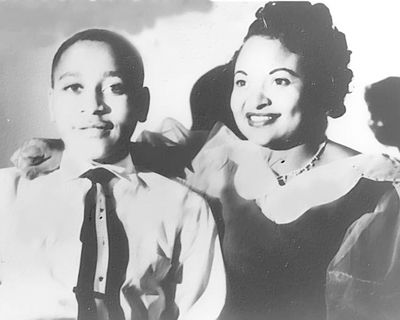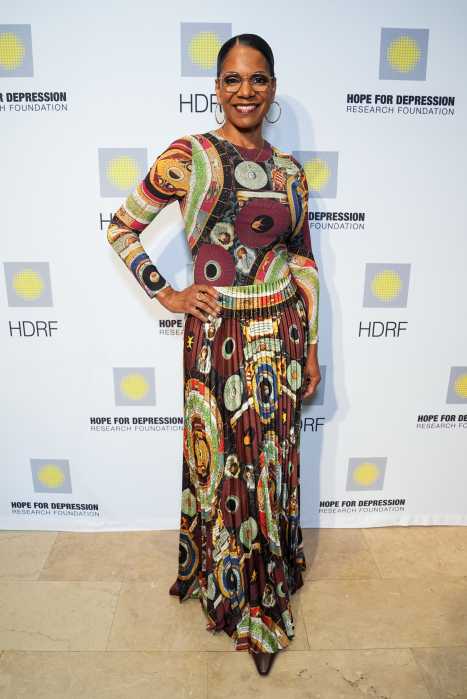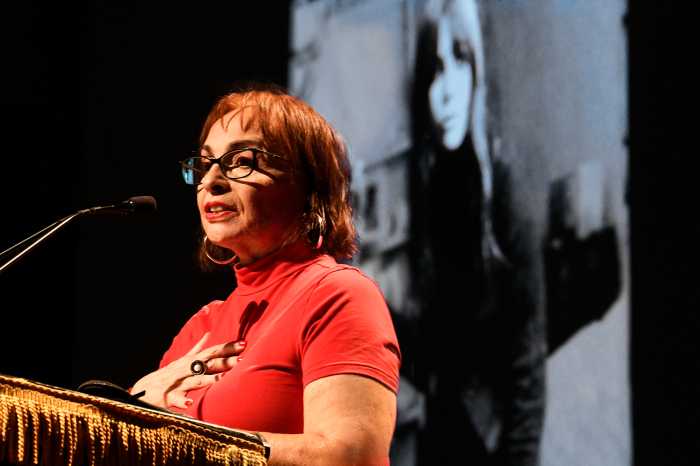By Jerry Tallmer
1955 event said to have spurred the Civil Rights movement
Billy Joe McAllister may have jumped into the Tallahatchie River, but Emmett Louis Till was thrown into it, a 75-pound cotton-gin fan strung around his neck with barbed wire to keep him – what was left of him – under.
The Billy Joe McAllister of Bobbie Gentry’s haunting song was white. Emmett Till, age 14, was black, a kid from Chicago – a “mischievous” kid, his cousins said – who made the mistake of putting a couple of pennies (for bubble gum) directly into the hand of the good-looking young white woman at the cash register of a grocery store in the tiny town of Money, Mississippi, instead of placing the coins on the counter.
He may also have wolf-whistled at her. So she said. She also said he made “a lewd gesture” and grabbed her around the waist. Or he may have been whistling, by habit, to overcome a polio-induced speech impediment. So his mother later said. In any event, the young white woman, 21-year-old small-town beauty-contest winner Carolyn Bryant, went out to her car to get a gun, and Emmett and his two cousins ran off.
At 2:30 in the morning, four nights later, August 28, 1955, two white men – Carolyn’s husband Roy Bryant and Bryant’s larger, older half-brother J. W. Milam – came to the home of Moses Wright, Emmett Till’s great-uncle, and took Emmett away with them.
Here is what they did to him, as recapitulated by Moses Wright and by Emmett’s mother Mamie Till-Mobley (both now dead) in “The Untold Story of Emmett Louis Till,” a stark 70-minute documentary by Keith A. Beauchamp that opens August 17 at Film Forum on Houston Street:
Beat him to a pulp. Cut off his tongue. Cut off his privates. Knocked his right eye out of its socket, his left eye into oblivion. Knocked out all but two of his teeth. Cut off an ear, or maybe both ears. Blew a bullet hole through his head from ear to ear. Took an axe to what remained of his head.
It was this Emmett Till that his mother insisted be left untouched, face up, in an open casket, at the funeral — “Let the world see it,” said steel-willed Mamie Till-Mobley – and it was a photograph of this Emmett Till in Jet magazine that shocked the daylights out of 10-year-old Keith Beauchamp as he was idling through some magazines in his parents’ study in Baton Rouge, Louisiana, a quarter of a century later.
That image has stayed with me all my life,” says the Beauchamp who has spent the past nine of his 34 years researching, witness-chasing, persuading, shooting his Emmett Till film. “I worked with Mrs. Mobley for eight years before she passed away. It took me three years just to convince Simeon Wright [son of Moses Wright] to talk to me. I’m still shooting. This is a never-ending documentary.”
And a never-ending case, considered by many as marking the beginning of the Civil Rights movement. {Three months later, Rosa Parks refused to move to the back of that bus in Montgomery, Alabama.)
Old Moses Wright courageously took to the stand, back in 1955, to identify Roy Bryant and J.W, Milam as the two white men who came and took Emmett away that night. Acquitted in short order by an all-white jury – on the ground that nobody could establish the battered body as that of Emmett Till — the two supremacists immediately started boasting in public about what they’d done, and sold their story for $4,000 to journalist William Bradford Huie.
Beauchamp’s “Untold Story” is credited with playing a part in persuading the United States Department of Justice to now reopen its investigation into the lynching of Emmett Till. Only a few weeks ago – as the movie was in previews at Film Forum – the remains in that casket were exhumed in order to establish by DNA or otherwise whether the body is indeed that of Emmett Till.
One strong piece of evidence, today as 50 years ago, is the ring the corpse had on one finger – a ring inscribed “L.T.,” the initials of Emmett’s soldier father Louis Till. Bizarrely enough, Louis Till was hanged – “by General Eisenhower,” is how Keith Beauchamp puts it, though not in the film – for the rape of three Italian women, and murder of two of them, during WW II.
“When the Emmett Till case came along, Mrs. Mobley sent a wire to President Eisenhower. He never answered it,” Beauchamp says. “He was worried about the Southern vote. ‘Whatever happens in Mississippi stays in Mississippi’ was Eisenhower’s attitude.”
Keith Andre Beauchamp, born July 2, 1971, at Fort Gordon, Augusta, Georgia, is himself the son of a man who served 21 years in the U.S. Army. His mother’s a professor of business administration and agriculture.
One of Beauchamp’s key sources has been Peggy Morgan, a white woman now in her 60s whose husband was close to Byron De La Beckwith. It was thanks in part to Mrs. Morgan’s testimony that, decades after the event, De La Beckwith was convicted of the 1963 murder of black civil-rights leader Medgar Evers.
“Peggy’s father and uncle were in on the Emmett Till murder,” says Beauchamp. “Her uncle supplied the 75-pound cotton-gin fan and the barbed wire” that anchored the body in the Talahatchie River.
“One of the things I’ve tried to do is not be biased,” says the coffee-colored 6-foot-3 former Louisianan who was once himself, at 17, at a pre-graduation party in a Baton Rouge teenage club, beaten up, kicked, and handcuffed by an undercover police officer for dancing with a white girl. “I also wanted to get the white side – how it was at that time, in that era.”
For that matter he has tracked down a number of black men who, as employees of Milan and Bryant, were forced to participate in the abduction and murder of the 14-year-old from Chicago.
Some of Beauchamp’s witnesses will be at one or more of the Film Forum screenings. He has been trying to reach Carolyn Bryant (now Carolyn Bryant Donham) for years, but every time he found where she was, she moved on. She’s now, in her 70s, living like a prisoner, Beauchamp says, in a house in Greenville, Mississippi, with her son Frank, a “Trespassers Will Be Prosecuted” sign in the front yard.
She was “not the white-lily queen everybody says she was, and it was said that she made up the whole lie to teach husband Roy” – who had left her alone in the store – “a lesson.” But the psycho-sexual-racial implications, the death-marked implications, the orgastic implications, of the Emmett Till case go far beyond a sulky young woman’s teaching a temporarily absent husband a lesson; in truth, you can find a lot of that dynamic right in the novels of William Faulkner of Oxford, Mississippi.
Or you can follow Keith Beauchamp’s tracks to Juanita Milam, ex-wife of J.W. Milam.
Milam and Bryant are both now dead of cancer, and both wives long ago – “within six months of Emmett’s murder” — divorced their husbands. “I was able to reach Juanita Milam. She said to me: “Both men are dead, Emmett Till is dead, the case is dead.’ ”
But it isn’t
Read more: NYPD Busts Bronx Auto Theft Ring





































